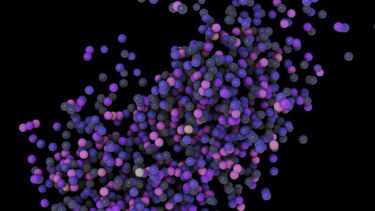Fusion: a future answer to sustainable energy?
There has never been a greater need to develop sustainable and green energy. Research at Sheffield, and in collaboration with UKAEA, is looking at how fusion technologies can be utilised to unlock a new era of clean energy production, free from harmful emissions and radioactive waste.

Fusion at Sheffield
Fusion has come to the forefront of discussions about sustainable energy as it has the potential to provide a clean, safe, and virtually limitless energy source. While fusion itself isn’t a new concept, harnessing the power from fusion to meet energy demands is a rapidly growing field of research which is still in early stages of development.
At Sheffield we are looking to address a number of challenges. Professor Chris Race, United Kingdom Atomic Energy Authority (UKAEA) Chair in Fusion Materials, is using modelling techniques to better understand the materials used inside a fusion reactor. The conditions for the reaction to take place are extreme and can reach millions of degrees Celcius and currently there are no materials which can withstand these conditions for a sustained period.
In Sheffield we’ll be using computer simulations to understand the processes of damage to materials at the smallest scales so that we can predict their behaviour over their lifetime in a fusion reactor. The challenges of the fusion environment mean that modelling must be used to complement experimental investigation and we will be working closely with researchers at UKAEA and at other universities. Fusion is today’s greatest scientific and engineering challenge and I’m really excited to be a part of the international effort to deliver fusion power.”
Professor Chris Race, UKAEA Chair in Fusion Materials
Benefits of fusion
Fusion is a reaction that releases huge amounts of energy when two light nuclei fuse together to form a single heavier nucleus. This is the same reaction that powers the sun and other stars!
A significant benefit of fusion is its fuel: light isotopes of hydrogen - deuterium and tritium. Deuterium is readily found in seawater, while tritium, though rare on Earth, can be replenished within fusion reactors through innovative techniques like breeding from lithium.
Unlike traditional nuclear fission which relies on limited resources like uranium and plutonium and generates long-lived, highly radioactive waste, fusion produces helium which is a mostly harmless gas. Additionally, the challenge of managing radioactive waste is a major concern for fission power. While fusion presents its own challenges, it does not have the same long-term waste issues of fusion.
Being able to harness the power of hydrogen to produce an energy source which produces no greenhouse gas emissions or harmful radioactive waste is a potential game-changer when it comes to sustainable and green energy.


